Do you have a question about the Honeywell W7100 and is the answer not in the manual?
Specifies input voltage, frequency, and power consumption ratings for the device and stages.
Details the resistance characteristics of the sensor input signal as a function of temperature.
Explains how resistor values determine the number of ON/OFF stages controlled.
Lists ambient and shipping temperature ranges for the controller.
States the non-condensing humidity rating for the device.
Describes mounting requirements, including screw size.
Lists component recognition by Underwriter's Laboratories Inc.
Lists related system components like sensors and transformers.
Lists available accessories for system expansion and configuration.
Guides on selecting a location and mounting the controller and sensor.
Explains how to change the number of stages controlled by adjusting a resistor.
Important notes and precautions related to the W7100G and W7101A wiring connections.
Explains the general purpose and function of chiller systems.
Details how the W7100G maintains stable discharge water temperature using its control band.
Discusses resetting the discharge water temperature setpoint for energy savings.
Illustrates the algorithm for adjusting setpoint based on space temperature.
Shows wiring diagrams for space reset sensors and potentiometers.
Explains using outdoor air temperature for setpoint reset to improve efficiency.
Illustrates the algorithm for adjusting setpoint based on outdoor air temperature.
Describes the function and behavior of the LEDs indicating stage operation.
Details how to modify outdoor air reset start and stop temperatures using resistors.
Provides typical setpoint ranges for HVAC and industrial applications.
Recommends reset ranges for HVAC applications based on space conditions.
Explains how to set the control band for optimal response and stability.
Details how to select timings (30 or 60 seconds) for stage delays via jumpers.
Instructs on selecting the correct resistor for the total number of controlled stages.
Specifies input voltage, frequency, and power consumption ratings for the device and stages.
Details the resistance characteristics of the sensor input signal as a function of temperature.
Explains how resistor values determine the number of ON/OFF stages controlled.
Lists ambient and shipping temperature ranges for the controller.
States the non-condensing humidity rating for the device.
Describes mounting requirements, including screw size.
Lists component recognition by Underwriter's Laboratories Inc.
Lists related system components like sensors and transformers.
Lists available accessories for system expansion and configuration.
Guides on selecting a location and mounting the controller and sensor.
Explains how to change the number of stages controlled by adjusting a resistor.
Important notes and precautions related to the W7100G and W7101A wiring connections.
Explains the general purpose and function of chiller systems.
Details how the W7100G maintains stable discharge water temperature using its control band.
Discusses resetting the discharge water temperature setpoint for energy savings.
Illustrates the algorithm for adjusting setpoint based on space temperature.
Shows wiring diagrams for space reset sensors and potentiometers.
Explains using outdoor air temperature for setpoint reset to improve efficiency.
Illustrates the algorithm for adjusting setpoint based on outdoor air temperature.
Describes the function and behavior of the LEDs indicating stage operation.
Details how to modify outdoor air reset start and stop temperatures using resistors.
Provides typical setpoint ranges for HVAC and industrial applications.
Recommends reset ranges for HVAC applications based on space conditions.
Explains how to set the control band for optimal response and stability.
Details how to select timings (30 or 60 seconds) for stage delays via jumpers.
Instructs on selecting the correct resistor for the total number of controlled stages.
The Honeywell W7100G Discharge Water Temperature Control is a microprocessor-based device designed to maintain an average discharge water temperature for reciprocating chiller applications. It achieves this by staging on and off compressors or unloaders as required. The W7100G can manage up to six stages of cooling independently and can be expanded to control up to ten stages when used with a W7101A Satellite Sequencer.
The W7100G utilizes an advanced proportional-plus-integral (PI) microprocessor control algorithm to minimize temperature droop, ensuring precise and stable temperature control. It employs an integrating control band concept, which matches the required operating capacity to the chiller load and minimizes offset from the control setpoint. This control band is adjustable from 0 to 10°F (0 to 6°C) and is centered on the discharge water setpoint, allowing for stabilization of system operation.
The controller features a soft start function to reduce compressor cycling during system startup. It also offers adjustable minimum on/off timing and time delay between stages, configurable for either 30 or 60 seconds. These timings are crucial for protecting compressors from damage due to short cycling.
The W7100G's setpoint is adjustable from 10 to 110°F (-12 to 43°C). It supports a reset function for the discharge water temperature setpoint, which can be based on either space or outdoor air temperatures. This reset function, adjustable from 5 to 20°F (3 to 11K), helps save energy under lighter loading conditions by adjusting the setpoint upward as average space temperature drops or downward as outdoor air temperature rises. For space reset, multiple sensors (e.g., T7047C1025) can be used to measure average space temperature, with the reset potentiometer set at the lowest desired cooling temperature. Outdoor air reset (using a C7031G1016 sensor) adjusts the setpoint based on outdoor air temperature, with modifications possible using series and parallel resistors to define T-High (no reset) and T-Low (full reset) points.
The number of controlled stages is determined by a fixed resistor value placed across terminals 7 and 8 on the W7100G. This resistor informs the controller of the total number of cooling stages to be managed, influencing its control behavior. LED indicators on the W7100G light up simultaneously with the energization of each stage relay, providing visual feedback on system operation.
| Control Algorithm | PID, On/Off |
|---|---|
| Input Type | Thermocouple, RTD |
| Output Type | Relay, Voltage, Current |
| Communication | RS-485 |
| Power Supply | 24V AC/DC, 100-240V AC |
| Operating Temperature | 0°C to 50°C (32°F to 122°F) |


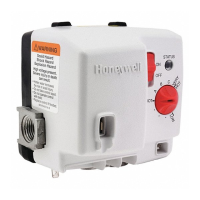
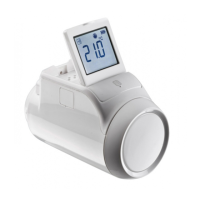
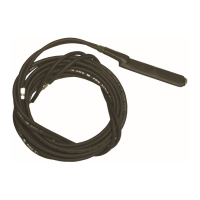



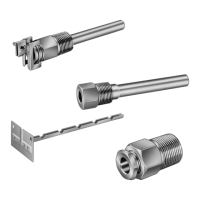
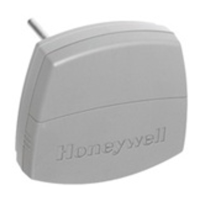
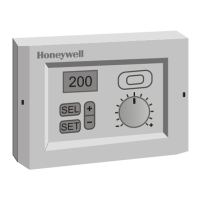

